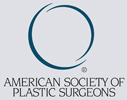Rhinoplasty
What is an attractive nose? Quite simply, it is a nose that fits your face. It is a natural-looking nose that achieves a harmonious balance with your other facial features. If you feel that your nose is not a good fit, you may benefit from cosmetic surgery of the nose, also called rhinoplasty. Rhinoplasty can enhance the shape, size, and general appearance of your nose. Below, you’ll find basic information about rhinoplasty surgery, but the best way to get complete answers to specific questions that relate to your individual needs is to have a personal consultation with Dr. Legere.
What is rhinoplasty surgery?
Rhinoplasty or nose surgery, sometimes referred to as “nose reshaping” or a “nose job,” improves the appearance and proportion of your nose, enhancing facial harmony and self confidence. Surgery of the nose may also correct impaired breathing caused by structural abnormalities in the nose.
Enhancing your appearance with nose plastic surgery
While the shape of your nose is usually the result of heredity, the appearance may have been altered in an injury or during prior surgery.
What can surgery of the nose accomplish?
Rhinoplasty surgery can change:
- Nose size, in relation to the other facial structures
- Nose width, at the bridge
- Nose profile, with visible humps or depressions on the bridge
- Nasal tip, that is large or bulbous, drooping, or too upturned
- Nostrils that are large, wide or upturned
- Nasal asymmetry and deviation
Is it right for me?
Nose cosmetic surgery is a highly individualized procedure and you should do it for yourself, not to fulfill someone else’s desires or to try to fit any sort of ideal image.
A rhinoplasty procedure is a good option for you if:
- Your facial growth is complete and you are 13 years of age or older
- You are physically healthy
- You do not smoke
- You have specific, but realistic goals in mind for the improvement of your appearance
Rhinoplasty Surgery Steps
Step 1 – Anesthesia
Medications are administered for your comfort during rhinoplasty surgery. The choices include intravenous sedation or general anesthesia. Dr. Legere will recommend the best choice for you.
Step 2 – The incision
Surgery of the nose is performed either using a closed procedure, where incisions are hidden inside the nose, or an open procedure, where an incision is made across the columella, the narrow strip of tissue that separates the nostrils.
Through these incisions, the soft tissues that cover the nose are gently raised, allowing access to reshape the structure of the nose.

Step 3 – Reshaping the nose structure
Surgery of the nose can reduce or augment nasal structures with the use of cartilage grafted from other areas of your body.
Most commonly, pieces of cartilage from the septum, the partition in the middle of the nose, is used for this purpose.
Occasionally a piece of cartilage from the ear and rarely a section of rib cartilage can be used.
Step 4 – Correcting a deviated septum
If the septum is deviated, it is now straightened and the projections inside the nose are reduced to improve breathing.
Step 5 – Closing the incision
Once the underlying structure of the nose is sculpted to the desired shape, nasal skin and tissue is redraped and incisions are closed. Additional incisions may be placed in the natural creases of the nostrils to alter their size.
Step 6 – See the results
Splints and internal tubes will likely support the nose as it begins to heal for approximately one week.
While initial swelling subsides within a few weeks, it may take up to a year for your new nasal contour to fully refine.
During this time you may notice gradual changes in the appearance of your nose as it refines to a more permanent outcome. Swelling may come and go and worsen in the morning during the first year following your nose surgery.

A nose surgery procedure to improve an obstructed airway requires careful evaluation of the nasal structure as it relates to airflow and breathing. Correction of a deviated septum, one of the most common causes of breathing impairment, is achieved by adjusting the nasal structure to produce better alignment.
How long will I continue to see my plastic surgeon?
After the initial healing period, you will return to the office for a postoperative follow-up visit so that your healing and progress can be evaluated. In the following months, you may be asked to return for periodic checkups. It is important to keep these appointments so that Dr. Legere can assess your long-term results and address any questions or concerns you may have.


